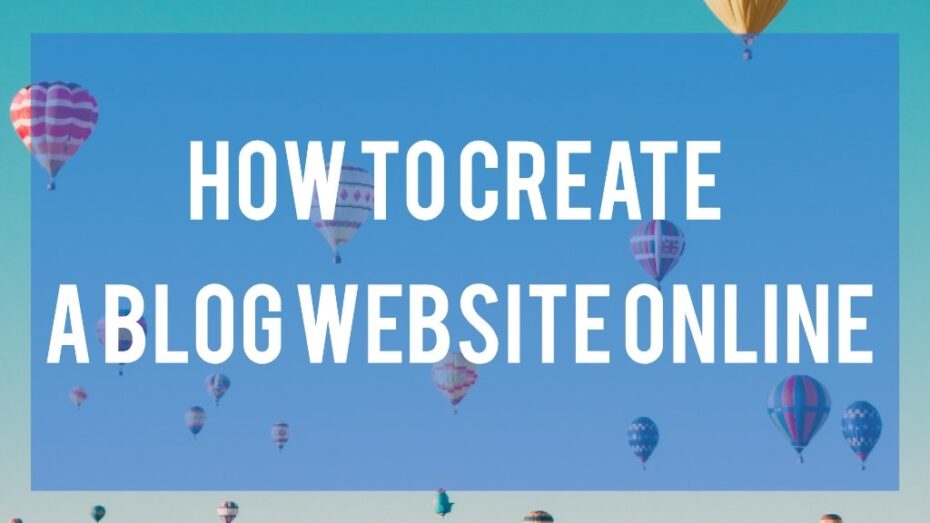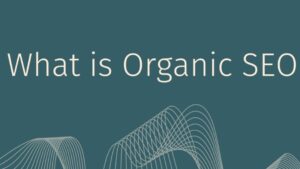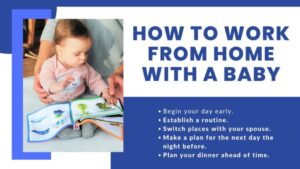What if I told you that creating a blog website could be the gateway to sharing your passions, ideas, and expertise with the world? How do you embark on this digital journey, and what are the essentials to ensure your blog stands out in the crowded online space?
My intention is to guide you through the process of building a blog website from scratch, ensuring that it not only reflects your unique voice but also attracts and retains an engaged audience.
From my perspective, the journey of creating a blog website is as exciting as it is challenging. It involves more than just choosing a platform or writing content; it’s about creating a personal or professional brand that resonates with your target audience. I believe that by following a strategic approach, you can overcome common pitfalls and set the foundation for a successful online presence.
My recommendation for aspiring bloggers is to stay true to your vision, continuously learn and adapt, and engage with your community in meaningful ways. Let’s dive into the essentials of building your blog website, ensuring that each step you take is aligned with your goals and resonates with your audience.
Web Hosting Recommendations
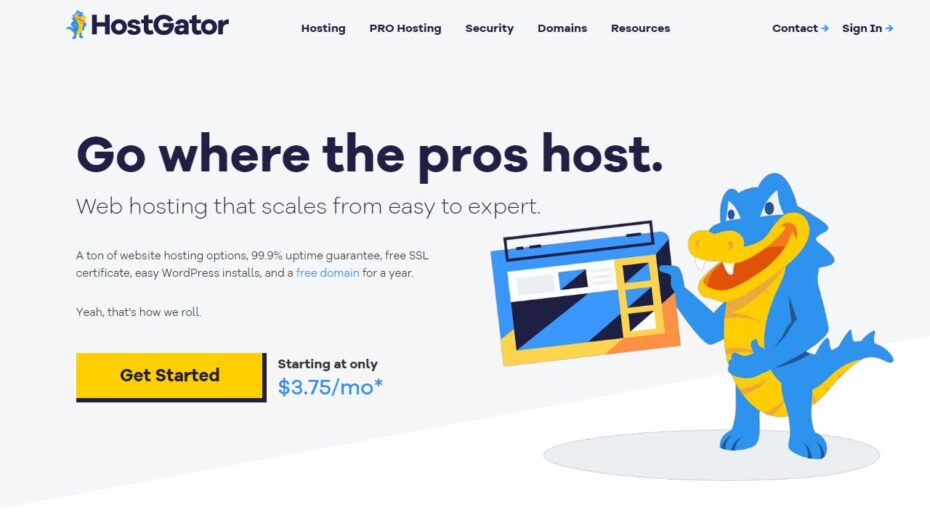 Hostgator
| 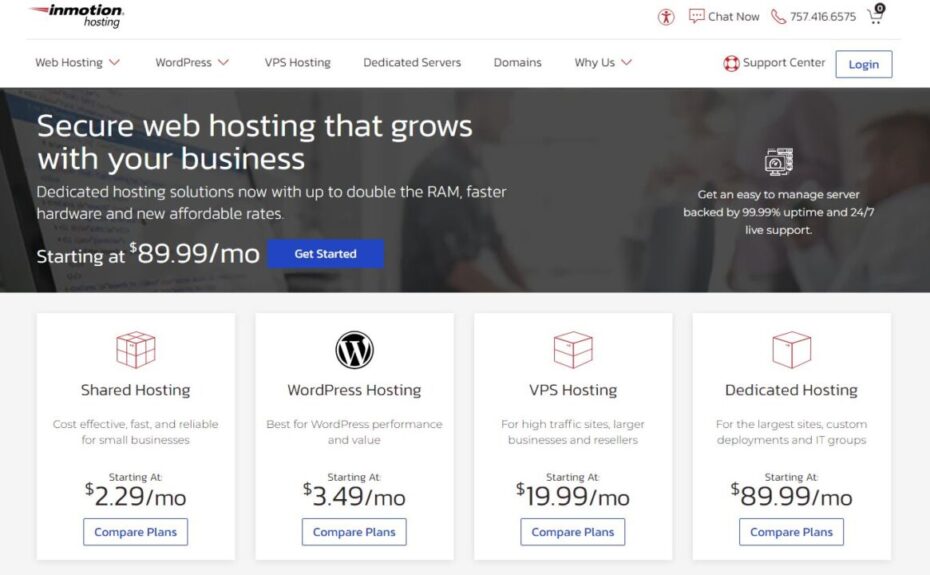 Inmotion
| 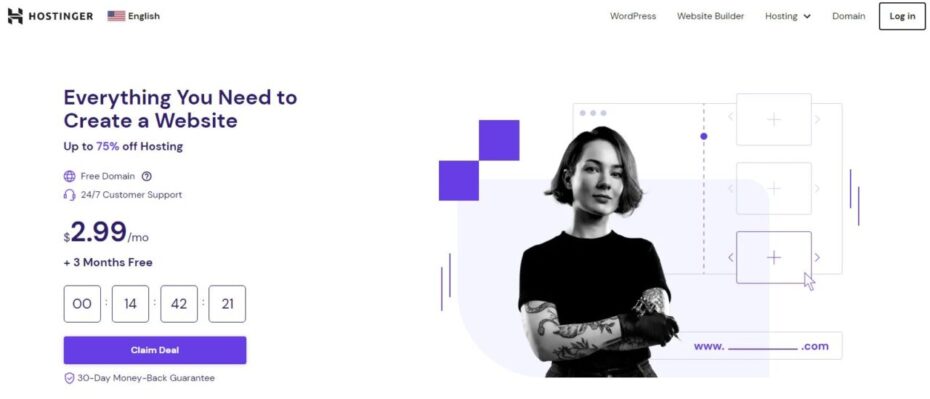 Hostinger
|
Table of Contents
Begin Your Journey: Essential Steps to Launch Your Blog Website
What are the foundational steps you need to take to successfully launch your blog website? From my perspective, the journey to creating a blog that captivates and engages requires a clear roadmap, beginning with the selection of the right platform and securing a domain that echoes your unique brand.
Developing a content strategy is an indispensable step. This involves planning your blog’s niche, target audience, and content calendar. From my point of view, a well-thought-out content strategy not only helps in keeping a consistent posting schedule but also in creating content that resonates with your readers and keeps them coming back for more.
Remember, the heart of a successful blog website is engaging and valuable content that speaks directly to the interests and needs of your audience.
Understanding the basics of SEO and social media marketing early on will give your blog a significant advantage. I recommend familiarizing yourself with SEO best practices to enhance your blog’s visibility and search engine ranking.
Additionally, leveraging social media platforms can amplify your reach and engage with a broader audience.
Let’s dive into how you can set the stage for a successful blog website launch, focusing on choosing the right platform and securing your unique domain.
Choosing the Right Platform: A Foundation for Success
Have you ever wondered how important the choice of platform is for your blog website’s success? From my point of view, it’s absolutely critical. The right platform can make or break your ability to engage with your audience, manage your content effectively, and scale your site as your blog grows.
My recommendation is to start by evaluating your needs. Are you looking for simplicity and ease of use, or are you willing to tackle a steeper learning curve for more control and customization? Platforms like WordPress offer extensive customization and a vast plugin ecosystem, making it a favorite among bloggers who prioritize flexibility.
On the other hand, platforms such as Squarespace provide a more streamlined, design-oriented experience that can be perfect for bloggers who want a beautiful site without a lot of backend work.
In my opinion, one of the most important considerations when choosing a platform is the community and support offered. A robust support network and active community can provide invaluable resources as you navigate the challenges of building and growing your blog. Don’t underestimate the value of community forums, tutorials, and customer service in your blogging journey.
Secure Your Unique Domain: Stand Out in the Digital Crowd
Why is your domain name so crucial, and how do you choose one that sets you apart? From my perspective, your domain name is not just an address; it’s a key component of your brand identity. It should reflect your blog’s theme, be easy to remember, and easy to type.
I would say that finding the perfect domain name involves a mix of creativity and strategic thinking. Consider incorporating keywords related to your blog’s niche, but also strive for uniqueness and memorability. Avoid using numbers and hyphens, as they can complicate and detract from your domain’s impact.
Lastly, my advice is to act quickly once you’ve decided on a domain name. The availability of domain names changes rapidly, and securing your preferred name early can prevent disappointment. Use a reputable domain registrar, and consider purchasing domain privacy protection to keep your personal information secure. Your domain isn’t just a web address; it’s a vital piece of your online identity and brand.
Designing Your Blog Website: Combine Aesthetics with Functionality
Just as a well-decorated home invites guests in, a beautifully designed blog website captivates visitors and encourages them to stay. But aesthetics alone are like a house with no foundation if functionality is overlooked. In my opinion, the magic happens when visual appeal meets user-friendly design, creating not just a blog but an experience for your audience.
Creating a visually appealing blog starts with understanding your audience’s preferences and the message you want to convey. I suggest focusing on a clean, accessible layout that reflects your brand’s personality.
Use colors and fonts that enhance readability and evoke the right emotions. Remember, the goal is to make your visitors feel at home and encourage them to explore more of your content.
Most importantly, a great design is responsive. With the variety of devices available today, from smartphones to desktops, ensuring your blog looks great and functions seamlessly on all platforms is crucial.
This adaptability not only improves user experience but also positively impacts your site’s SEO—a win-win situation. My advice is to prioritize simplicity and intuitiveness in your design choices, creating a blog that’s both beautiful and easy to navigate.
Crafting a Visually Appealing Layout that Captivates
Imagine your blog as a canvas where content and design converge to tell a compelling story. How can you arrange this canvas to captivate your audience at first glance? In my view, it begins with a layout that emphasizes your best content while offering an effortless browsing experience.
Utilize white space strategically to reduce clutter and focus attention on your key messages. I recommend employing visually engaging elements like high-quality images and videos, but do so judiciously to maintain fast loading times. It’s about finding the right balance between visual richness and simplicity, ensuring your site is inviting, not overwhelming.
Typography plays a subtle yet powerful role in holding your reader’s attention. I believe choosing the right font pairings can significantly enhance the readability and aesthetic appeal of your blog.
Experiment with fonts that complement each other and align with your brand’s tone, but keep legibility in mind, especially for your main body text. From my perspective, your layout should not only look good but also facilitate an enjoyable reading experience.
Integrating User-Friendly Features for an Effortless Experience
Have you ever visited a blog so intuitive that finding information felt almost instinctive? Achieving this level of user-friendliness should be a goal for your blog website. It’s not just about making your site easy to navigate but also ensuring that features are straightforward and functional.
I strongly believe in the importance of a well-structured navigation menu. It guides your visitors through your site, leading them exactly where they want to go without any hassle. Incorporating a search bar is another recommendation of mine, as it allows users to quickly find specific content, enhancing the overall user experience.
Lastly, I would say that optimizing your blog for speed is non-negotiable. In an age where patience is thin, a slow-loading blog can drive away potential readers. My advice is to regularly test your site’s loading times and consider minimizing image sizes, leveraging caching, and choosing a reliable web hosting service.
Remember, a smooth, fast, and enjoyable user experience encourages visitors to stay longer and engage more deeply with your content.
Content Creation Strategies for Your Blog Website
Did you know that companies who blog receive 97% more links to their websites than those who don’t? This statistic highlights the undeniable power of content in driving traffic and building a strong online presence.
In today’s digital age, crafting a content strategy for your blog website is not just beneficial; it’s essential for standing out in a crowded online space. Let’s delve into how to create content that not only engages your readers but also enhances your site’s visibility.
Creating engaging content starts with understanding your audience. What are their interests, pain points, and questions? I suggest starting by defining your audience personas.
This step is crucial for tailoring your content to meet their needs and interests, ultimately fostering a deeper connection. From my perspective, content that resonates is content that addresses specific audience concerns, provides solutions, and evokes emotion.
Next, consistency is key. I would say that a consistent publishing schedule not only helps in building a loyal readership but also signals to search engines that your site is regularly updated, potentially improving your search rankings.
My advice is to create a content calendar. This tool can be invaluable in planning your content strategy, ensuring a steady stream of diverse and relevant topics that keep your audience engaged and coming back for more.
Lastly, don’t shy away from experimenting with different content formats. Whether it’s how-to guides, interviews, infographics, or video content, diversifying your content portfolio can cater to various audience preferences and learning styles. In my estimation, the more varied and rich your content offering, the broader your appeal will be.
Generating Engaging Content that Resonates with Readers
Engagement is the currency of the digital realm, and generating content that resonates with readers is akin to striking gold. But how do you create content that not only captures attention but also holds it?
From my point of view, it starts with compelling storytelling. A story can convey information, evoke emotions, and create a memorable experience for your readers, making your content more relatable and shareable.
I recommend incorporating real-life examples, case studies, and personal anecdotes to bring your content to life. These elements can help illustrate points more vividly, making complex information more digestible and engaging. Moreover, they can help establish credibility and foster a sense of trust with your audience.
Another key aspect is to invite interaction. Pose questions, encourage comments, or prompt readers to share their own experiences. This approach not only boosts engagement but also builds a community around your blog. From my experience, blogs that foster a sense of community and interaction are more likely to retain readers and encourage repeat visits.
Implementing SEO Best Practices to Boost Visibility
While producing quality content is crucial, it’s equally important to ensure that your content is discoverable. Implementing SEO best practices can significantly boost your blog website’s visibility in search engine results. But what does SEO-friendly content look like?
In my opinion, it begins with keyword research. Identifying the keywords and phrases your target audience uses to search for information online is the foundation of an effective SEO strategy.
I strongly believe in the importance of incorporating keywords naturally into your content, titles, and meta descriptions. Keyword stuffing, or overusing keywords, can harm your SEO efforts and result in penalties from search engines. Instead, focus on creating valuable, informative content that naturally incorporates your target keywords.
Finally, don’t overlook the power of internal linking. By linking to other relevant posts on your blog, you can guide readers to additional content they might find interesting, increasing their time spent on your site.
From my perspective, internal links not only enhance user experience but also help search engines understand and index your site’s structure better, contributing to improved SEO performance. My advice is to make SEO an integral part of your content creation process, ensuring your valuable content gets the visibility it deserves.
SEO Services Recommendations
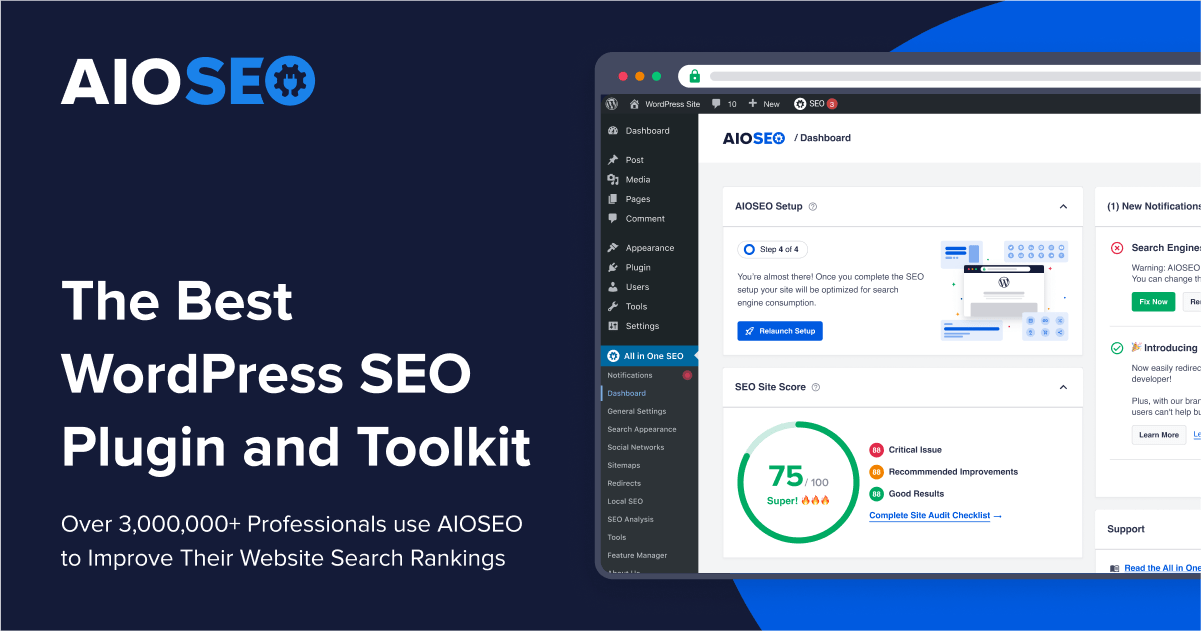 AIOSEO
| 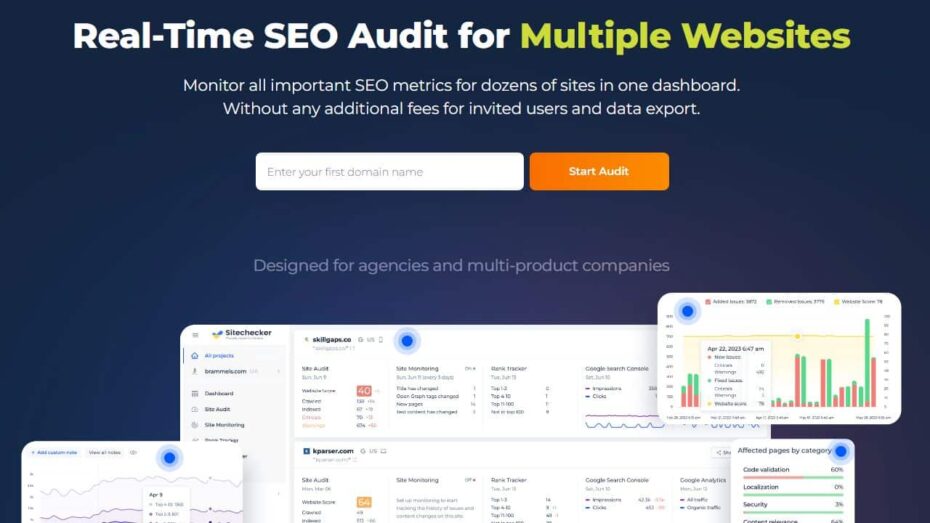 Sitechecker
| 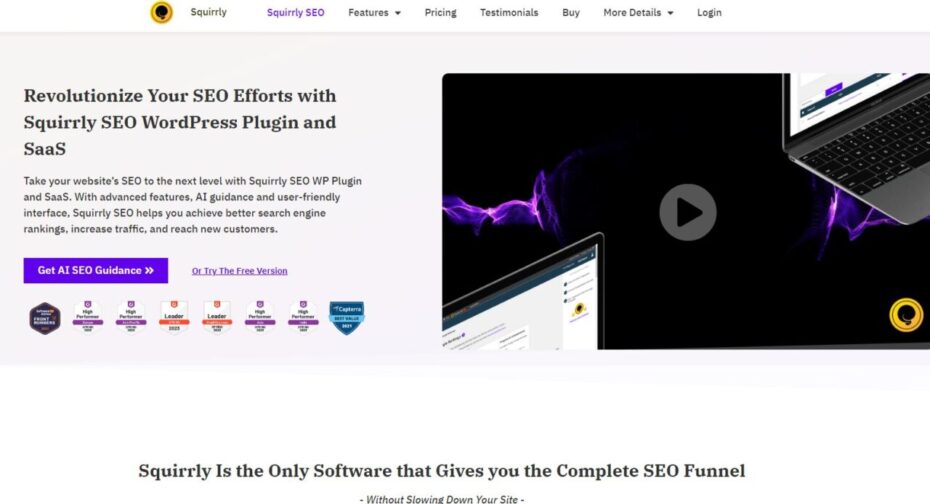 Squirrly
|
Amplify Your Blog Website’s Reach with Effective Promotion
“Content is king, but distribution is queen, and she wears the pants.” This quotation underscores the crucial role of promotion in maximizing the reach and impact of your blog website.
No matter how compelling or valuable your content may be, its potential can only be realized when it reaches and engages the right audience. Let’s explore how to effectively amplify your blog’s reach through strategic promotion, focusing on mastering social media and leveraging email marketing.
Promoting your blog website effectively requires a multi-faceted approach that goes beyond simply publishing content. Firstly, understanding where your target audience spends their time online is crucial.
This knowledge allows you to focus your promotional efforts on the platforms that offer the highest engagement potential. I recommend conducting audience research to identify these platforms and tailor your promotional strategies accordingly.
Secondly, collaboration and networking can significantly enhance your promotional efforts. Partnering with other bloggers or influencers in your niche can expose your blog to a wider audience.
I believe in the power of community and mutual support; hence, guest posting on relevant blogs and inviting others to contribute to your site can be mutually beneficial. These collaborations can not only increase your reach but also add value to your content offering.
Lastly, don’t underestimate the value of analytics in refining your promotion strategies. Tracking the performance of your promotional activities can provide valuable insights into what works best for your blog. My advice is to use these insights to optimize your approach continuously, focusing on strategies that deliver the most engagement and growth for your website.
Mastering Social Media to Engage a Wider Audience
“Social media is not just an activity; it is an investment of valuable time and resources.” This perspective highlights the importance of a strategic approach to social media for amplifying your blog’s reach. But how can you master social media to engage a wider audience effectively? Here’s how you can start.
Creating platform-specific content that resonates with your audience is key. Each social media platform has its unique culture and content preferences. I suggest tailoring your posts to fit the format and tone that perform best on each platform, whether it’s short, engaging videos for TikTok or insightful articles for LinkedIn. This customization can significantly increase your content’s appeal and shareability.
Engagement is the lifeblood of social media success. I strongly believe in the importance of interacting with your followers. Responding to comments, participating in relevant conversations, and encouraging your audience to share their thoughts can foster a sense of community and loyalty.
From my perspective, social media should be a two-way street where you not only share content but also listen and engage with your audience.
Utilizing social media advertising can also be a powerful tool in your promotional arsenal. Targeted ads can help you reach a broader audience beyond your current followers, especially those who are likely to be interested in your content.
I recommend experimenting with different ad formats and targeting options to find what works best for your blog, always with the goal of maximizing engagement and driving traffic to your site.
Leveraging Email Marketing to Build Lasting Relationships
“Email has an ability many channels don’t: creating valuable, personal touches—at scale.” This statement captures the essence of why email marketing remains a potent tool for bloggers. By leveraging email marketing, you can build lasting relationships with your readers, turning casual visitors into loyal followers. Here’s what to do to make the most of email marketing.
First, focus on building a robust email list. Offer your website visitors a compelling reason to subscribe, such as exclusive content, tips, or access to free resources. I suggest placing your subscription forms prominently on your blog and making the sign-up process as straightforward as possible. Remember, a permission-based email list is a valuable asset for any blogger.
Sending regular, value-packed newsletters is a powerful way to keep your audience engaged. My recommendation is to curate content that aligns with your readers’ interests and needs, providing them with real value in every email. This approach can enhance readers’ engagement with your blog and encourage them to return for more.
Personalization can significantly boost the effectiveness of your email marketing efforts. I would say that tailoring your emails to address the recipient by name and segmenting your list to deliver more targeted content can lead to higher open and click-through rates.
In my view, email marketing is not just about promoting your latest posts; it’s an opportunity to create a meaningful dialogue with your readers, strengthening your relationship with them over time.
Email Marketing Recommendations
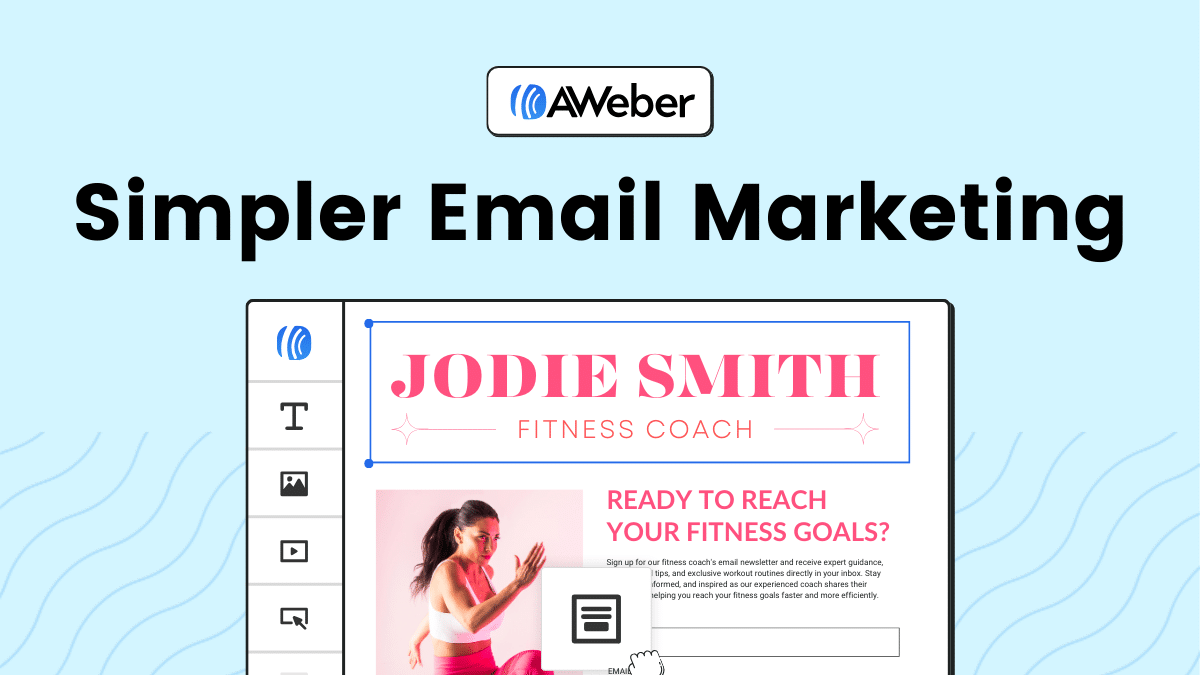 Aweber
| 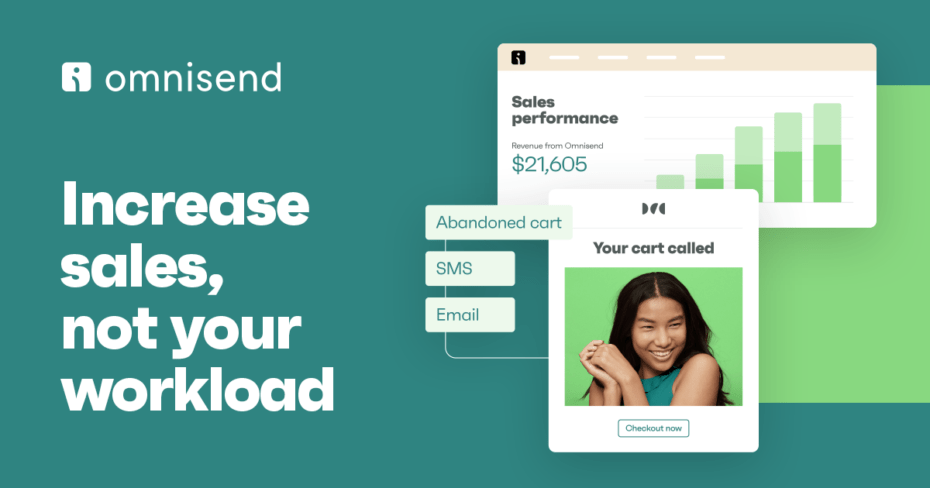 Omnisend
| 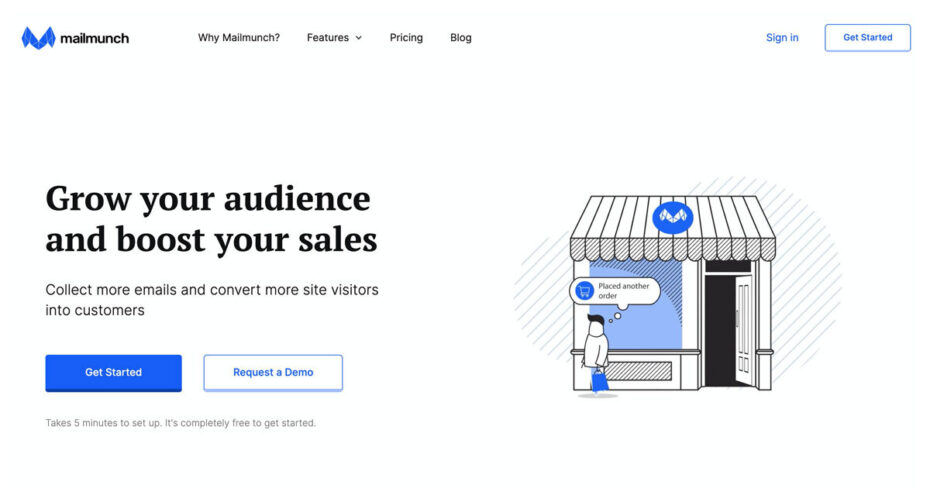 Mailmunch
|
Monitoring and Enhancing Your Blog Website’s Performance
Just as a gardener must continually tend to their garden to ensure it flourishes, a blogger must consistently monitor and enhance their website to guarantee its growth and relevance.
In the ever-evolving landscape of the digital world, understanding and adapting to the behavior of your audience can significantly impact the success of your blog. Let’s explore the vital steps in monitoring your blog website’s performance and how continuous improvements can foster a more engaging and dynamic online space.
Understanding your audience’s behavior provides a roadmap to refine your content and tailor it to their preferences. For instance, if analytics reveal that certain topics garner more attention, it would seem prudent to explore these subjects further.
Additionally, examining the devices your audience uses to access your blog can inform design decisions, ensuring your site offers an optimal viewing experience across all platforms. From my perspective, the goal of analyzing traffic data is not just to increase numbers, but to deepen engagement and satisfaction among your readers.
It’s also essential to monitor the performance of your blog in search engines. SEO rankings can provide insights into how visible your blog is to potential new readers. Regularly updating your SEO strategies according to best practices can help maintain or improve your site’s visibility.
My suggestion is to keep abreast of the latest SEO trends and algorithm updates, integrating them into your blog’s optimization strategy.
Analyzing Traffic Data to Understand Your Audience
Analyzing traffic data is like decoding the language of your audience, offering direct feedback on their preferences and behaviors. By understanding which content resonates with your readers, you can make informed decisions that enhance their experience and, in turn, your blog’s performance. Here’s how you can start.
Firstly, identify the key metrics that matter most to your blog’s goals. Whether it’s page views, bounce rate, or conversion rate, focusing on these indicators can provide actionable insights.
I think it’s crucial to look beyond surface-level metrics and delve into user behavior patterns, such as the average session duration and the paths users take through your site. This deeper analysis can uncover opportunities to optimize the user journey and increase engagement.
Secondly, segmenting your audience can offer more nuanced insights. By categorizing your traffic data by source, geography, or device type, you can tailor your content and design to better suit the needs of different audience segments.
In my estimation, personalized experiences are increasingly expected by users, and leveraging data segmentation is a step toward meeting those expectations.
Lastly, regularly review and act on your findings. Data analysis should be an ongoing activity, with insights feeding into a cycle of continuous improvement. I would say that adapting content based on traffic data not only improves user engagement but also can lead to higher search engine rankings, creating a virtuous cycle of growth for your blog.
Continuous Improvement: Updating Content and Design
In the realm of blogging, stagnation is the enemy of success. Continuous improvement in content and design ensures your blog remains relevant, engaging, and competitive. Here’s my recommendation for keeping your blog fresh and aligned with your audience’s expectations.
Firstly, updating old content can breathe new life into your blog. This could involve refreshing posts with the latest information, improving SEO, or enhancing readability with better formatting. I believe that regularly revisited content maintains a blog’s value over time, keeping it relevant for both new and returning visitors.
Secondly, design updates are equally important. The visual appeal and usability of your blog play a significant role in attracting and retaining readers. From my point of view, periodic design refreshes, whether major overhauls or minor tweaks, can significantly impact user experience. Ensuring your blog is visually appealing and easy to navigate can make a substantial difference in how visitors perceive your site.
Lastly, incorporating user feedback into your updates is crucial. Listening to your audience’s suggestions and criticisms can provide direct guidance on how to improve your blog. I strongly believe that an audience-centric approach to continuous improvement can lead to a more engaged and loyal readership.
Remember, the goal of updating content and design is not just to attract new visitors but to enhance the overall experience for all users, fostering a deeper connection with your audience.
Forge Your Path to Blogging Success
Embarking on the journey of creating and nurturing a blog website is akin to setting sail on a vast digital ocean. The waves of content creation, design, promotion, and audience engagement can be challenging to navigate, but the rewards of reaching your destination—a successful and impactful blog—are immense.
Here’s how you can start charting your course towards blogging success, with the wisdom gleaned from our exploration of essential strategies and practices.
Firstly, remember that the heart of your blog lies in the content you create. It’s the main reason visitors will come to your site and why they’ll stay or return. Crafting engaging, valuable, and relevant content consistently should be your north star.
I believe that understanding your audience’s needs and interests, and responding to them with well-researched and passionately written posts, will set you apart in the crowded blogosphere. This approach not only fosters a loyal readership but also elevates your blog’s authority and credibility.
Secondly, the aesthetic and functional design of your blog plays a critical role in retaining the interest of your visitors. A user-friendly, visually appealing site can transform a casual visitor into a regular reader and advocate for your blog.
My advice is to periodically review and refresh your blog’s design, ensuring it remains aligned with your brand and the expectations of your audience. Moreover, implementing SEO best practices and leveraging analytics will guide you in fine-tuning your blog for better visibility and engagement.
Lastly, promotion and engagement are the sails that will propel your blog forward. Mastering social media, email marketing, and other channels to amplify your content’s reach is crucial. However, genuine interaction with your audience—whether through comments, social media, or personalized emails—turns visitors into a community.
I strongly believe that building and nurturing this community is foundational to long-term success. Engage with your readers as you would with guests in your home: with warmth, openness, and a genuine desire to provide value.
frequently asked questions (FAQ)
What platform should I use to create my blog?
Popular platforms include WordPress, Squarespace, and Blogger. WordPress is highly customizable, while Squarespace offers ease of use and beautiful templates.
How do I choose a domain name for my blog?
Pick a name that reflects your blog’s content, is easy to remember, and preferably includes keywords related to your niche.
What is web hosting and why do I need it?
Web hosting stores your blog’s data and makes it accessible online. Reliable hosts ensure your blog is always available to visitors.
How can I design my blog to look professional?
Use clean, responsive themes, high-quality images, and easy-to-read fonts. Consistency in design helps build your brand.
What content should I include in my blog?
Focus on your niche, providing valuable, engaging, and well-researched content that resonates with your target audience.
How do I optimize my blog for SEO?
Use relevant keywords, create high-quality content, optimize meta tags, and build internal and external links to improve your blog’s search engine ranking.
How can I promote my blog to reach a wider audience?
Utilize social media, email marketing, guest posting, and SEO techniques to increase visibility and attract readers.
How do I monetize my blog?
Options include affiliate marketing, sponsored posts, selling digital products, and displaying ads through networks like Adsterra.
How often should I post new content?
Consistency is key. Posting regularly, whether daily, weekly, or bi-weekly, helps retain readers and improve search engine ranking.
How do I measure the success of my blog?
Use analytics tools like Google Analytics to track traffic, user engagement, and other metrics to understand your blog’s performance and areas for improvement.


